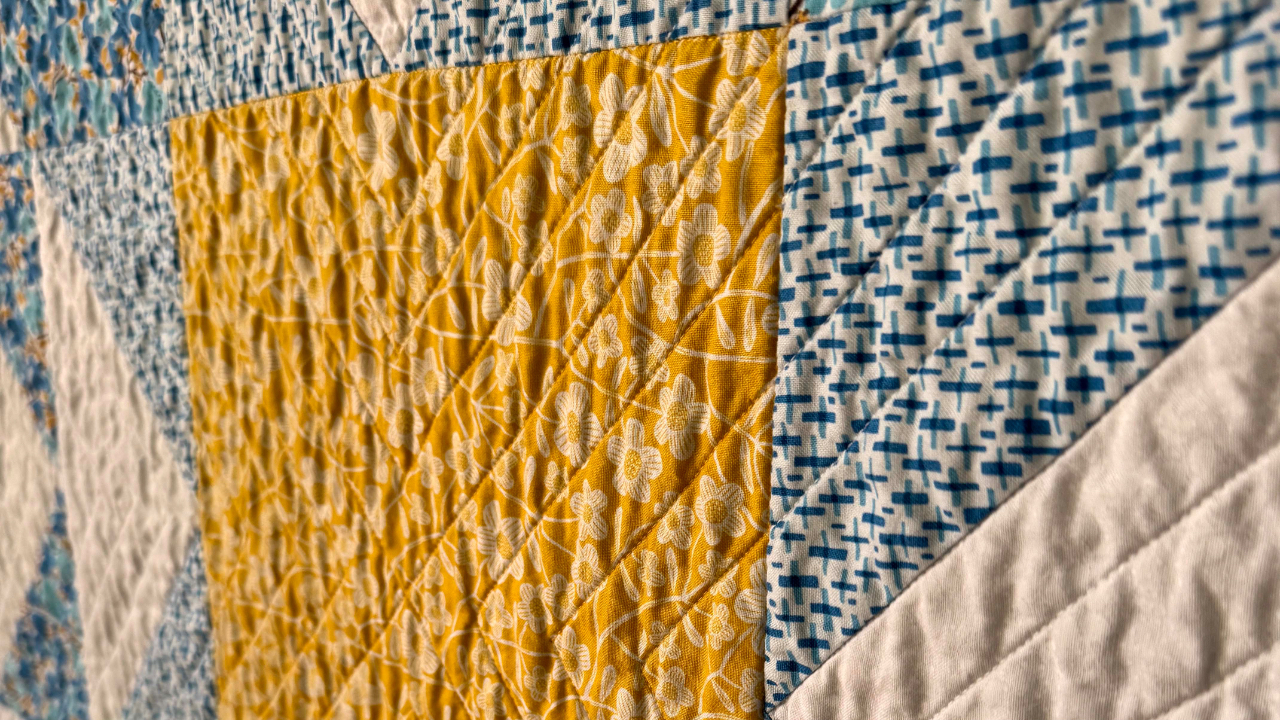
Quilt as desired.
Why do quilt patterns with fabric requirement charts, precise cutting directions, and tons of piecing diagrams always end with these three words?! What does that even mean? How do I know what I desire? These three words are why you need a quilt plan.
A quilt plan allows you to try different quilting styles before sitting down at your machine and laying down some thread. You can sit down and get to quilting when you have a plan. You won’t get to a certain point and wonder what to do next. When it’s all planned out, you go!
In this post, I’ll share three types of quilting and my favorite way to create a quilt plan.
Types of Quilt Plans
Allover: This is when you pick one free motion quilting motif, like meander or paisleys, and quilt it over the entire quilt. It is also sometimes called edge-to-edge quilting. I really like how these large swirls turned out on a recent scrappy finish.

Semi-custom: You’ll usually put one motif in the background and choose two or three other motifs for your blocks. These motifs likely enhance the shape of the block or bring attention to a particular design element in your piecing. I did switchbacks, swirls, and paisleys in the flowers for this quilt. The leaves and stems have swirls and switchbacks. The background is my current favorite - pebbles.

Custom: The only rules are that there are no rules! You’re usually evaluating each shape or group of shapes and deciding which motif to use on each one. I am working on a custom quilted quilt next, so I’ll be sure to return and update this post when I have pictures to share. In the meantime, check out the great work of Angela Walters, the godmother of free motion quilting.
Making a Quilt Plan
If you’re looking for an easy way to make a quilt plan, print a copy of the coloring sheet that comes in most quilt patterns. Now, get out your favorite marker and start doodling different motifs around the sheet. Doodle until you’re happy with the result, printing more sheets if needed. The benefit of doing this on paper is building the muscle memory your body needs when you get to your sewing machine.
If you’re more into digital drawing, bring that coloring sheet into a drawing app like Procreate. If you don’t like a certain motif, you can delete it. If you want to try out different options, you can put each option on its own layer and turn them off and on to see options quickly. This is a huge benefit of doing a digital plan. (The downfall is being unable to get out your favorite marker to doodle.)
So, what has been sitting in your WIP pile forever because you don’t know how you want to quilt it? Get to doodling, make a plan, and finish that quilt with pride.






